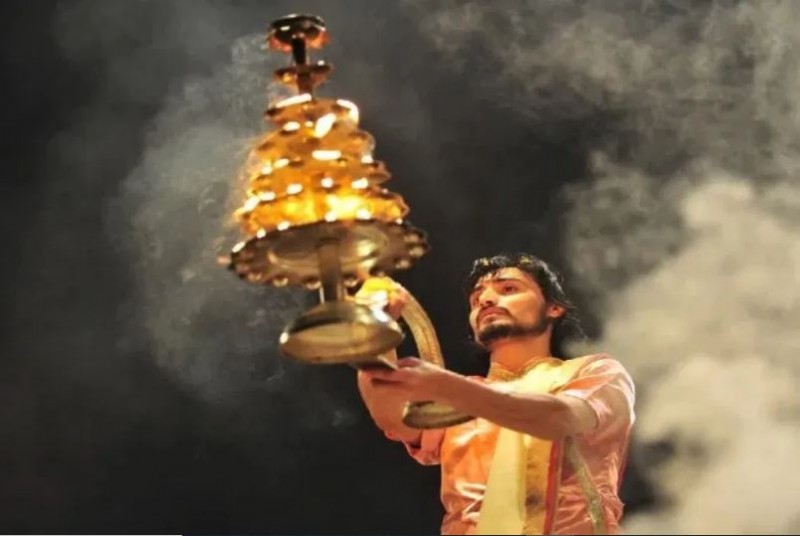
Worship has special importance in Sanatan Dharma. During worship, no matter which deity it is, Aarti is performed. In Aarti, a lamp is placed on a plate and rotated in front of the deity specially. But do you know what Aarti means and why it is performed?
Meaning and purpose of Aarti:
The word Aarti is derived from the Sanskrit word 'Aartika', which means trouble, calamity, problem, suffering, and affliction. According to the scriptures, the purpose of Aarti is to remove the troubles and troubles that befall the Lord. The scriptures depict the child form of the Lord, and devotees do not want the Lord to suffer any kind of pain. Therefore, they regularly perform Aarti of the Lord.
Goswami Tulsidas ji writes in his Vinay Patrika that once Lord Rama stood guard over his hut with a bow and arrow. Then Tulsidas ji threw all his belongings in the Ganga so the Lord does not have to face any trouble.
There are two main reasons for Aarti:
Illumination of the image of the Lord: During Aarti, the body parts of the Lord are illuminated with the light of the lamp so that the devotee can see the image of the Lord and take it into his heart. In this sense, Aarti is also called 'Neerajana', which means especially illuminating the image of the Lord.
Protection from the evil eye: Staring at the deity during the Aarti can cause the deity to be affected by the evil eye. In such a situation, the flame of the Aarti removes all the ill effects of the deity, and the deity is protected from any evil eye.
Expressions of Aarti:
There are two main meanings of Aarti mentioned in the scriptures:
Destruction of sorrow and adversity: One meaning of Aarti is that God should remove the sorrow and adversity of the devotee. In Shri Ram Charit Manas, Goswami Tulsidas ji has written, 'I have come to hear the good news of my devotees and I will destroy the world. I will save you, Raghubir.' In this context, Vibhishan comes to Lord Shri Ram and while performing Aarti, he pleads that God should remove all his sorrows.
Vision of Beauty: The second meaning is that the devotee sees the beautiful vision of the Lord from head to toe and receives all His blessings.
The correct way to do Aarti:
There is a prescribed method of performing Aarti in Puja Vidhi:
Aarti of the feet: Aarti is started from the feet of the Lord. First of all, Aarti of the feet of the Lord is done four times.
Aarti of Navel: After this, Aarti of the navel of the Lord is performed twice.
Aarti of the Face: Finally, Aarti of the face of the Lord is performed seven times.
During Aarti, blowing the conch and ringing the bell also have special significance. This makes the atmosphere of worship pure and spiritual.
Thus, Aarti is not just a religious act but an important means of attaining the grace and protection of God. It not only honors God but also removes the difficulties of the life of the devotees.
WhatsApp Tests New Features: Say Goodbye to Phone Numbers with Usernames
Happy Raksha Bandhan 2024: Wishes, Quotes, Images, Facebook & WhatsApp Status
Tech Highlights of the Week-End: Google Pixel 9 Debuts, WhatsApp to Add Like Button and More